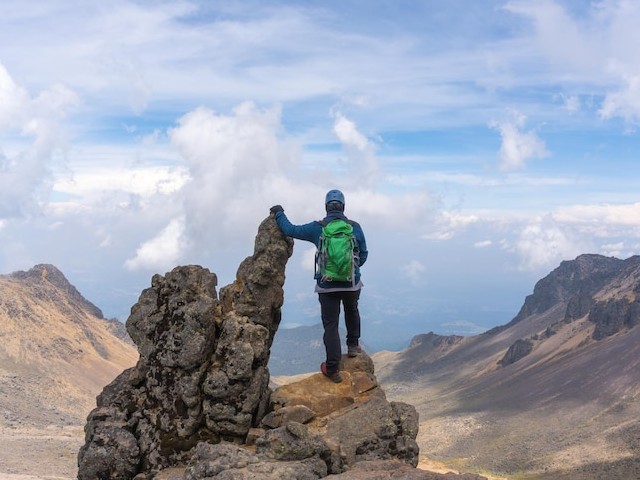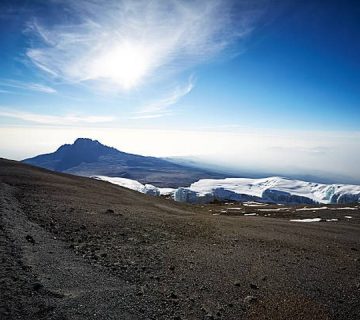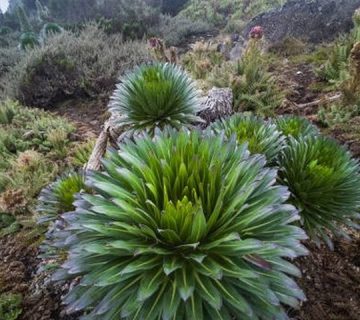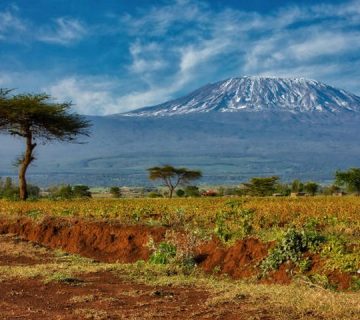Kilimanjaro Trek Through Various Nature Zones: A Journey Beyond the Clouds
Introduction: Embark on the Adventure of a Lifetime
Imagine ascending through a kaleidoscope of ecological systems, from lush rainforests buzzing with life to stark alpine deserts and finally to the icy summit of the highest peak in Africa. This isn’t just a hike; it’s a voyage through the heart of nature’s diversity. Welcome to the Kilimanjaro trek, a journey that transcends simple mountaineering to become a profound communion with the earth. The Kilimanjaro Centre for Trekking and Ecotourism (KCTE) invites you to experience the breathtaking beauty of Kilimanjaro through its various nature zones, each offering unique landscapes and challenges. This is more than just a climb; it’s an exploration of the natural world in its most undisturbed form.
A Walk Through the Wilderness: Exploring Kilimanjaro’s Ecological Zones
H2: The Rainforest – A Symphony of Greens
Begin your trek at the lush, lower slopes of Kilimanjaro, where the thick rainforests reign supreme. The air here is dense with the scent of wet earth and the chorus of exotic birds. The canopy above teems with life, offering an evergreen shelter. This zone is a living proof of nature’s bounty, featuring a dense tapestry of trees, ferns, and flowering plants. It’s in these forests where the adventure truly begins, setting the stage for an epic narrative that gradually unfolds as you ascend.
H2: The Heath and Moorland – The Land of Colorful Contrasts
As you climb higher, the dense rainforest gives way to the fascinating heath and moorland zone. This area is renowned for its vast, open landscapes and unique flora, such as the exotic giant lobelias and senecios, which seem to punctuate the misty horizon. This zone offers a surreal, almost otherworldly experience, with rolling clouds and cooler temperatures, providing a stark contrast to the warm, humid forests below.
H2: The Alpine Desert – A Surreal Martian Landscape
Above 4,000 meters, the lush vegetation disappears, and trekkers enter the alpine desert zone. This area is marked by sparse rainfall, intense solar radiation, and dramatic temperature swings between day and night. The landscape here is stark, with rocky outcrops and a scattering of hardy plants clinging to life. Trekking through this zone feels like walking on another planet, offering panoramic views and the challenge of adapting to the rugged environment.
H2: The Arctic Summit – The Roof of Africa
The final zone is the summit area, where the air is thin, and the temperatures are freezing. The terrain is dominated by ice and snow, and the feeling of reaching the top is nothing short of triumphant. Here, above the clouds, you stand at the highest point in Africa, with the continent spread majestically below you. The summit of Kilimanjaro, known as Uhuru Peak, offers not just breathtaking views but a moment of profound personal achievement.
Why Trek Kilimanjaro with KCTE?
At Kilimanjaro Centre for Trekking and Ecotourism (KCTE), we understand that trekking Kilimanjaro is a significant challenge and a transformative journey. We are committed to providing a safe, enriching, and unforgettable experience. Our expert guides, who are locals with deep knowledge of the mountain’s geography and ecology, are equipped to offer insights into the unique biodiversity and cultural significance of the regions you traverse. Sustainability is at the heart of our operations, ensuring that the beauty of Kilimanjaro and its surrounding communities is preserved for future generations.
FAQs: Prepare for Your Trek
What is the best time to trek Kilimanjaro?
The best times to climb Kilimanjaro are during the dry seasons, from June to October and from December to March. These months offer the most favorable weather conditions for trekking.
How fit do I need to be to undertake the Kilimanjaro trek?
While you don’t need to be a professional athlete, a reasonable level of fitness is required. It’s advisable to undertake several months of physical preparation, including hiking, cardiovascular training, and strength exercises.
What should I pack?
Packing the right gear is crucial for your Kilimanjaro trek. Essentials include thermal clothing, waterproof layers, hiking boots, a sleeping bag suitable for low temperatures, sun protection, and a sturdy backpack. KCTE provides a detailed packing list to all registered trekkers.
How does KCTE support sustainable tourism?
KCTE is deeply committed to sustainable practices, including minimizing trail impact, supporting local economies through employment opportunities, and participating in conservation efforts. We believe that responsible tourism is the key to preserving Kilimanjaro’s natural and cultural heritage.
Concluding Thoughts: Your Call to the Summit
Trekking Kilimanjaro is more than just an adventure; it’s a pilgrimage through the vibrant heart of our planet’s ecosystems. From the dense folds of the rainforest to the icy silence of the summit, each zone offers a new perspective and a fresh challenge. With Kilimanjaro Centre for Trekking and Ecotourism (KCTE), you are not just embarking on a physical journey but are also part of a continuing story of respect and love for the natural world.
Are you ready to experience the majesty of Kilimanjaro? Book your climb with KCTE today and stand on the roof of Africa, where the sky touches the earth, and the horizons stretch forever. Join us on this incredible journey and discover why Kilimanjaro is not just a mountain but a monument to the splendor of our earth’s ecosystems.




